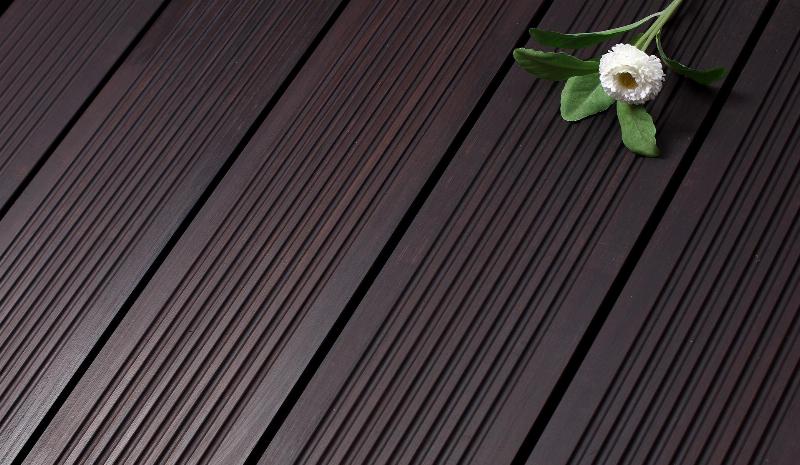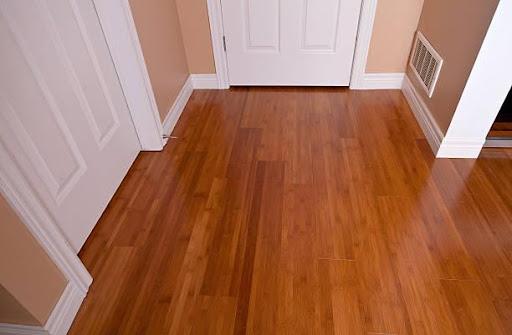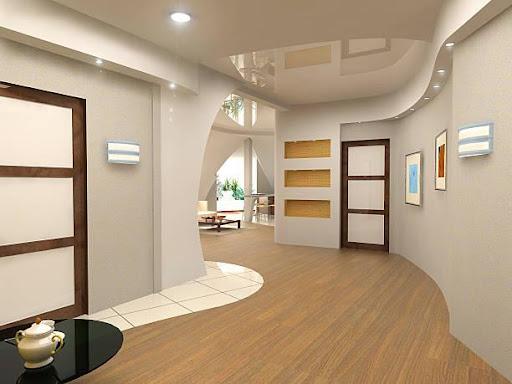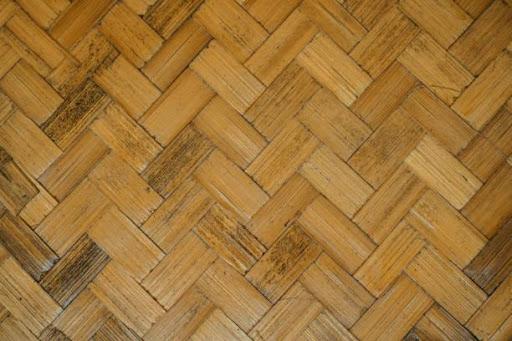Can You Refinish Bamboo Floors?
Bamboo flooring is so popular. This is because it’s versatile, eco-friendly, durable, quick to install, and low maintenance.
Also, if it’s well sealed, it’s resistant to water, mildew, mold, and insects (like termites). If you’re worried that bamboo is easy to scratch, don’t be. Strand-woven bamboo planks are tougher than all floors, even Ipe. Some bamboo flooring can even be used with heels, and it can handle messes from kids or pets like your dogs.
But we can’t say that bamboo can’t get scratched at all. When the protective coating wears off or anything sharp touches it, it scratches. It may be scratched in a busy area if chairs are dragged over, it if felt pads aren’t used, or if anything sharp brushes it.
Bamboo flooring is too new for professionals to agree on how to refinish it, so doing it yourself is risky. Still, you have a good chance of getting good results, especially if your floors are made of strand bamboo.
Bamboo flooring comes in three main varieties:
Horizontal bamboo flooring
The most common of the three choices is probably horizontal bamboo flooring. It’s made of horizontal rows of bamboo stalks that have been glued together. You probably think of this kind of bamboo flooring when you think of bamboo flooring.
Floors made of vertical bamboo
Thin bamboo strips make up vertical bamboo flooring. The strips are stuck together (you guessed it) vertically. Because of how it is put together, this type has more lines. It also looks more modern and clean-cut.
Woven-Strand Bamboo Flooring
Strand-woven bamboo is not made of thin strips of bamboo. Instead, it is made from stalks that have been cut into thin fibers and then stuck together with glue. This mixture is then pressed into blocks with the help of heat and pressure.
This is how strand-woven bamboo can last for a long time. It’s like, very strong. That is, it will last even longer than the longest-lasting wood flooring. Strand-woven bamboo flooring is almost twice as hard as ash flooring.
Because strand-woven bamboo flooring is so hard to dent and scratch, you won’t have to refinish it as often. It may be harder to sand down when you do. But not by much.
Read Also: How Long Does It Take To Sand Hardwood Floors
Comparing other types of floorings
Solid vs. Engineered Bamboo Flooring
Just like hardwood, bamboo comes in both solid and engineered forms. Engineered planks feature a thin layer of bamboo on top of plywood or fiberboard.
Engineered bamboo flooring has the same pros and cons as engineered wood. So you can think the same way about both.
Can Engineered Bamboo Floors Be Refinished?
In a word, “sometimes” Engineered bamboo has the same pros and cons as engineered wood. So you can think the same way about both.
Just how thick is it? As a general rule, bamboo flooring with a veneer thicker than 2 mm can be refinished, but you may only be able to do it once.
And if you don’t have that thick of a veneer layer, you might not be able to refinish it at all. We know that this is one of the worst things about engineered wood.
If you are worried about this, you should talk to a specialist at a flooring store near you. They can tell you how many times their custom-made goods can be refinished.
Also, refinishing is much less of a problem (almost none at all) if you buy your wood or bamboo already finished. Why?
The best-engineered hardwood floors have UV-cured coatings with scratch-resistant aluminum oxide. You’ll only have to do a simple resurfacing job on these floors, which doesn’t require sanding.
Carbonized bamboo flooring vs. natural (non-carbonized) bamboo flooring
Engineered bamboo with and without carbonization
Different Types of Bamboo That Has Been Made
When refinishing bamboo flooring, consider carbonized vs. raw bamboo.
Bamboo that hasn’t been carbonized is a lighter color, which helps it hide dents and scratches. On the other hand, carbonized bamboo flooring has been treated, giving it a darker amber color.
The bad thing about carbonized bamboo is that it is a little bit easier to dent. So, if you want flooring that won’t scratch, you’d be better off with something that isn’t carbonized.
Carbonized vs. non-carbonized is like arguing about hickory vs. oak. Both products are great for the same kinds of uses, but they look, feel, and cost a little bit differently. (Flooring Stores 2020)
Can bamboo floors that have been carbonized be refinished?
Once again, yes. Carbonized bamboo scratches more easily than natural (non-carbonized bamboo). That means it’s easier to sand and finish.
We understand, though. Some people want an alternative to wood floors that is dark and very hard. Consider vinyl plank vs. laminate flooring. You might find what you need in one or both of these options. (The Greener Living Blog 2020)
Will giving carbonized bamboo a new finish makes its color lighter?
The good news is that every part of a plank of carbonized bamboo is the same color. So even if you sand it and refinish it, the beautiful color will stay the same.
Are bamboo floors easy to scratch?
Carbonized goods are more scratch-prone than bamboo (especially in horizontal or vertical planks).
Remember that click-together floating floors may need more frequent refinishing. Floating flooring wears out quicker than regular floors.
How can scratches be removed from bamboo flooring?
The only way to remove scratches on a floor is to sand it down and refinish it. We’ll talk about how to do that step-by-step below.
Like other hardwoods, bamboo flooring can be stained.
Even the original color of your bamboo floors can be changed with stain. Want ebony flooring’s dark, moody look? Just use an ebony stain to refinish your bamboo floors.
Want the look of hickory flooring but don’t want to deal with the pros and cons of hickory flooring? Color your bamboo! The natural grain of bamboo is just as interesting as that of hickory.
Just remember that it’s very hard to stain strand-woven bamboo.
Strand-woven bamboo is the only kind that is hard to stain, so you should stay away from it. On the other hand, both vertical and horizontal bamboo take stains very well.
Pro Tip Takeaway: Before staining the complete floor, we recommend testing a small section first.
Why else should you refinish bamboo flooring?
Bamboo is a great alternative to wood floors because it can be refinished to look like other types of wood.
Plus, bamboo is very durable, so it’s a great alternative for floors that don’t get wet (like vinyl planks). It’s hard to obtain low-VOC vinyl plank flooring, so bamboo is a good option. Plus, you can change the finish to make it look like any type of LVT you want.
The step-by-step procedure for refinishing bamboo floors
We applaud you if you’re a DIY pro and ready to refinish your bamboo floors. Here are some ideas and tools that will help you do well.
The tools and gear you’ll need:
- Products for cleaning
- Fine grit sandpaper
- Sanding machine
- Rags or brushes
- Mask, gloves, and safety glasses.
- Stain Sealer
Step 1: Prepare your room
Starting with a clean workspace is very important. Make sure to tape up the room so the dust doesn’t get into other parts of your home. For the same reason, we also think you should rent a shop vacuum. Even floors that are good for the environment can make dust that you don’t want to breathe in.
Step 2: Smooth It Out.
You only have to sand off the top layer, which is good news. You won’t have to put too much pressure on the sander. If the sawdust is white, then everything is fine. If it’s darker, the pressure should go down.
Step 3: Vacuum the floor and check for splinters.
After sanding, it is important to clean the area again very well. Just look for splinters and make sure there are none in the area. The best way to get all the dust off the floor is to vacuum.
Step 4: Fill any holes.
Now that the area is clean, you can see if there are any scratches that need more work. Wood filler works to fill in deep holes.
Step 5: Apply the stain.
The following step is to stain. Before putting the stain on the whole floor, you should test it on a small area first. You should use two coats and let it dry for a few hours between each one. Some people use a rag and wipe the stain on, while others use a paintbrush.
Step 6: Finish the layers
After you put on the stain and let it dry, you can seal it with a polyurethane finish. Just like with the stain, you should put on two coats and let each one dry in between. This final process will help the floor seem new, even in a high-traffic location like a mudroom.
Are You Ready To Refine Bamboo Floor?
Bamboo floors can get damaged, but they can also be refinished to make them look like new. Sharp furniture legs, high heels, cat claws, etc. may damage bamboo flooring.
Get in touch with us right away so we can talk about your project. You’ll be thrilled can call us at 832-800-8889 or book a free consultation on our website right now.









